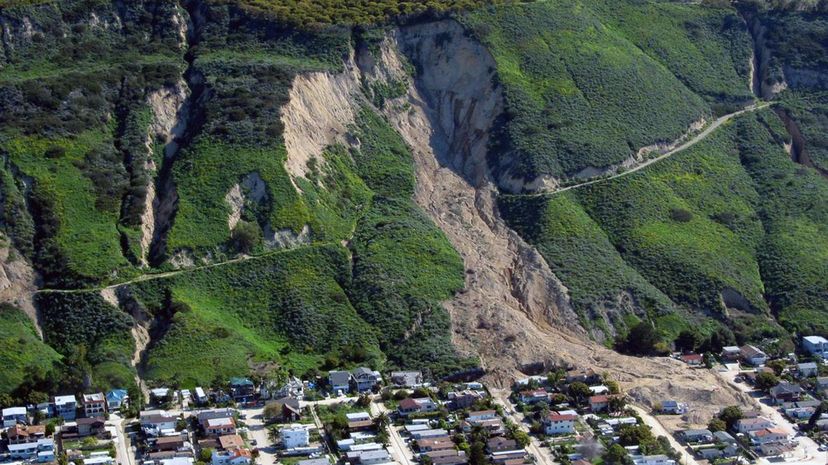Weathering and Erosion

A landslide can strike in an instant, true. But in reality, forces have quietly been at work on that section of land for a long time. Weathering is one of these subtler forces behind landslides.
Weathering is the natural wearing down of objects by elements in the environment. Although the term is sometimes mistakenly used interchangeably with erosion, the two processes are distinct. Erosion is the process of transporting weathered material, and weathering is the actual wearing down of that material. Weathering is an important factor in landslides; heavily weathered landscapes are much more likely to be eroded. Heat, cold, water and oxygen are all common forces of weathering. This wearing down of objects can be either mechanical or chemical [source: NPS Park Geology Tour].
Advertisement
- Mechanical weathering is the physical breakdown of an object into smaller components without changing its chemical composition. Changes in temperature, the freezing and thawing of water and plant growth are forces of mechanical weathering.
- Chemical weathering refers to the breakdown of an object into particles with a different mineral composition than the original object. Water is perhaps the most powerful agent of chemical weathering: Over time, it can dissolve many kinds of rocks into a solution that has a different chemical makeup than the original substance. Other types of chemical weathering involve more complicated chemical reactions with oxygen, carbon dioxide, water or other compounds.
Erosion, the transfer of weathered sediment, always involves deposition, or the deposit of the weathered sediment in a new location. Along with weathering, erosion and deposition are continually reshaping the Earth's surface. Sediment is constantly being worn down by some type of weathering, carried away by an agent of erosion and deposited in a different place. Landslides are actually a very extreme, fast-acting method of erosion: They transfer sediment down a slope and deposit it at the end of their path. The sediment a landslide deposits is known as its talus.
The five agents of erosion are wind, waves, running water, glaciers and gravity. As we discussed earlier, gravity is the underlying agent of all types of mass movement. Without the force of gravity to pull sediment down an incline, a landslide would not occur. But any of the other four agents can also play a part. Read on to learn more about what causes landslides.